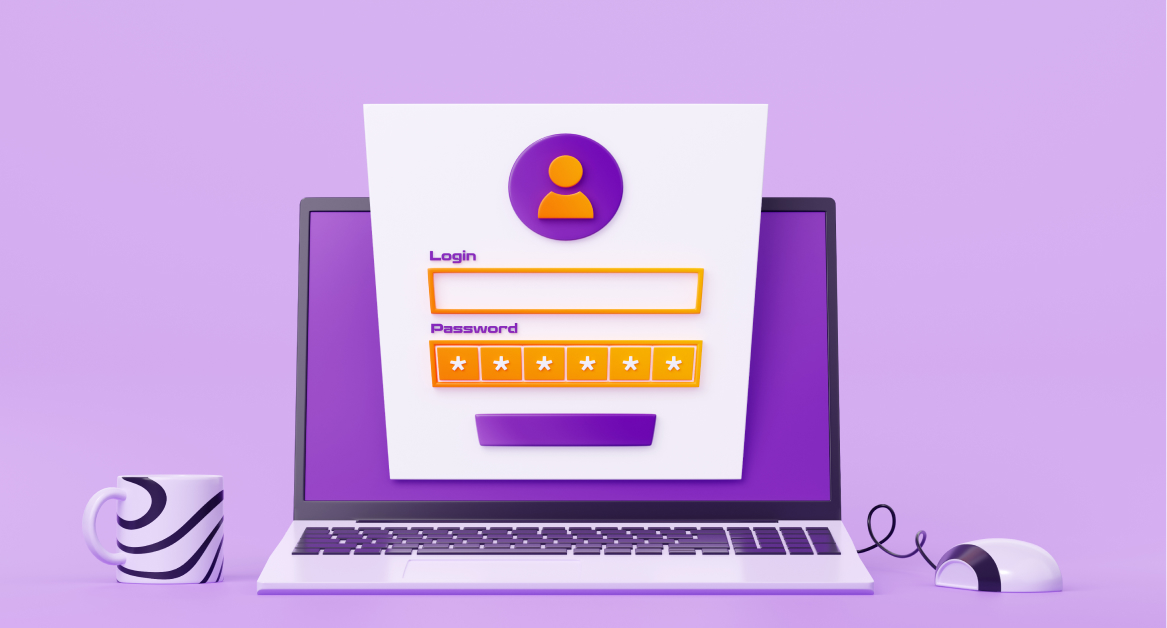Managing Apple devices across a growing organization isn’t just about buying hardware. It’s about provisioning devices quickly, keeping data secure, and ensuring your people have the right tools from day one.
Apple Business Manager is Apple’s free web-based platform that helps businesses automate and streamline the setup and management of Apple devices. Whether you’re a startup scaling fast or an established company with a distributed team, ABM helps IT teams reduce manual work while boosting security and control.
In this article, we’ll explore what Apple Business Manager is, how it works, and how you can use it to create a secure, and scalable IT experience for your teams.
What is Apple Business Manager
Apple Business Manager (ABM) is a free, web-based portal from Apple that allows organizations to manage their Apple devices, apps, and users from one place. It works hand in hand with mobile device management (MDM) software to automate deployment, enforce security policies, and assign access levels across all Apple devices in your organization.
Think of ABM as your central command center for all things Apple in the workplace. Whether you’re managing iPhones, iPads, or MacBooks, ABM makes it easier to get devices into employees’ hands—fully configured and ready to go.
Here’s what Apple Business Manager helps you do:
- Enroll devices automatically into your mobile device management system through automated device enrollment
- Distribute apps and content through the apps and books feature
- Create and manage Managed Apple IDs for employees
- Assign roles and access levels for different users, such as admins or managers
- Integrate with identity providers like Microsoft Azure AD
- Keep everything secure and compliant with built-in Apple programs
Apple Business Manager is especially powerful for remote or hybrid teams. With zero-touch deployment, IT teams don’t need to physically handle each device. Devices arrive at your employee’s doorstep, power on, and automatically configure themselves with the right settings, apps, and restrictions.
7 key benefits of Apple Business Manager
1. Zero-touch deployment
No more unboxing devices and manually setting them up one by one. With touch deployment through automated device enrollment, devices can be shipped directly to employees and automatically configured on startup. This ensures every device is secured, updated, and personalized with minimal IT involvement.
2. Centralized device and user management
You can easily manage users, assign devices, and organize them into departments or teams. Whether you’re dealing with new hires, role changes, or offboarding, Apple Business Manager lets you manage users and devices at scale with just a few clicks.
3. Seamless app and content distribution
Through the apps and books feature, IT admins can purchase licenses in bulk and distribute apps from the App Store directly to managed devices. This eliminates the need for employees to use personal Apple IDs and simplifies compliance tracking. For businesses that require custom-built tools tailored to specific workflows, partnering with a mobile app development company can complement this process by delivering in-house applications ready for deployment through ABM.
4. Secure, customized user access
ABM gives you the ability to define access levels based on roles—admin, staff, or custom roles. With Managed Apple IDs, users can access business services without linking personal accounts, keeping work and personal data separate.
5. Integration with MDM solutions
Apple Business Manager works seamlessly with mobile device management software. This allows IT to enforce policies, restrict features, push updates, and even remotely wipe data from a lost or stolen device. It’s a layered approach that supports your company’s cybersecurity strategy.
6. Compatibility with identity providers
You can integrate ABM with services like Microsoft Azure AD, allowing for single sign-on and easier management of employee credentials. This streamlines onboarding, enhances security, and reduces password-related support requests.
7. Full device lifecycle management and compliance
Apple Business Manager gives you end-to-end control—from procurement to decommissioning—across all managed devices. Paired with Apple Configurator and your MDM, it streamlines deployment, enhances security, and ensures compliance with enterprise standards while offering direct integration with Apple’s support and warranty programs.
How Apple Business Manager works
Apple Business Manager acts as a bridge between your Apple devices, your users, and your mobile device management (MDM) solution. It doesn’t replace your MDM, but it unlocks powerful automation features that make your MDM setup more effective.
Here’s a breakdown of how it works across the key areas:
Device enrollment
When you purchase Apple devices through an authorized reseller or carrier, those devices can be automatically added to your Apple Business Manager account. From there, you can assign them to your MDM solution, triggering automated device enrollment. This process ensures each managed device is:
- Pre-configured with the right settings
- Connected to your internal systems
- Enforced with security policies
- Restricted from unauthorized changes
Once the user turns on the device, it’s already enrolled—no manual steps needed.
Managed Apple IDs
Instead of using personal Apple IDs, your employees can use Managed Apple IDs created through ABM. These IDs are unique to your organization and allow access to services like iCloud, FaceTime, and iWork—but with admin-defined restrictions and visibility. You can:
- Create them in bulk using your MDM or identity provider
- Control what features users can access
- Reset passwords and manage access centrally
This approach also enhances security and simplifies content management across teams.
App and content distribution
The apps and books section of ABM makes it easy to license and distribute software. You can:
- Purchase apps in volume from the App Store
- Assign apps to devices or users without needing Apple IDs
- Reassign app licenses when employees leave
- Push apps directly to devices via your MDM
No more expense reports for app reimbursements or tracking down who’s using what. Everything is managed through a central, transparent system.
Role and access management
With customizable roles and access levels, you can delegate management without sacrificing control. For example, you might:
- Grant HR team members access to user creation
- Allow IT admins to manage devices and MDM assignments
- Restrict finance teams to app purchasing only
This reduces the risk of misconfiguration and helps enforce separation of duties.
Integration with other Apple programs
ABM is tightly integrated with Apple Configurator, Apple Business Essentials, and Apple support tools. These integrations allow you to:
- Prepare devices manually if needed (using Apple Configurator)
- Support small businesses with Apple Business Essentials (a paid service that bundles MDM, storage, and support)
- Work with AppleCare for Business for streamlined support and escalations
Setting up Apple Business Manager: Step-by-step

Step 1: Enroll your organization
- Go to https://business.apple.com and click Enroll now
- Fill in your business details, including:
- Company name and D-U-N-S Number (a unique business identifier from Dun & Bradstreet)
- Business phone number and address
- A domain email address (no Gmail, Yahoo, or other personal providers)
- Company name and D-U-N-S Number (a unique business identifier from Dun & Bradstreet)
- Apple will verify your business. This process may take a few days. Once approved, you’ll get a confirmation email.
Pro tip: Use a shared email (e.g., itadmin@yourcompany.com) to avoid issues if someone leaves the company.
Step 2: Set up administrators and roles
Once inside the portal, the first thing to do is assign roles. Apple Business Manager has several built-in roles with specific access levels:
- Administrator: Full access to all settings and features
- Manager (ABM-specific roles): Can handle devices, apps, or people depending on assigned privileges
- Staff: Limited to tasks like viewing data or managing a smaller subset
Add your team members and assign appropriate roles to avoid bottlenecks or security risks.
Step 3: Link to your MDM solution
Apple Business Manager doesn’t manage devices directly—it works in tandem with your MDM software. To link the two:
- In Apple Business Manager, go to Settings > Device Management Settings
- Click Add MDM Server, name it, and upload the public key file from your MDM solution
- Apple will generate a server token file (.p7m). Download it and upload it to your MDM platform
This step allows ABM to assign devices automatically to your chosen MDM.
Step 4: Assign devices to your MDM
Once your MDM is linked, you can assign devices to it. This ensures that devices purchased through Apple or an authorized reseller are auto-enrolled into MDM on activation.
To do this:
- Go to Devices
- Search by serial number, order number, or upload a CSV list
- Choose the MDM server to assign these devices to
Now, any device assigned here will automatically enroll into your MDM during setup.
Step 5: Create and manage Managed Apple IDs
Next, you’ll want to create Managed Apple IDs for your users. These IDs are critical for:
- Accessing Apple services like iCloud and FaceTime (with admin controls)
- Separating personal and work data
- Managing access levels within ABM
You can create Managed Apple IDs manually, via CSV import, or through integration with Microsoft Azure Active Directory for automatic syncing.
Step 6: Set up apps and books
Navigate to Apps and Books to:
- Search for free or paid apps in the App Store
- Purchase volume licenses using Apple Volume Purchase Program (VPP)
- Assign licenses to users or devices
- Reclaim and reassign licenses as employees leave or roles change
This makes app distribution more efficient, transparent, and easy to manage.
Step 7: Start managing devices
Now that your devices are assigned to your MDM and configured with Managed Apple IDs, you can begin managing them in real-time. Depending on your MDM solution, you can:
- Push apps and content
- Enforce security policies
- Restrict features like AirDrop or camera use
- Track device status and compliance
- Remotely lock or wipe lost/stolen devices
Best practices for IT admins
Apple Business Manager is powerful—but like any tool, how you use it makes all the difference.
1. Automate wherever possible
Use automated device enrollment to eliminate manual steps during setup. When a new MacBook or iPad is turned on, it should immediately connect to your MDM and configure itself. This ensures consistency and reduces setup time, especially for distributed teams.
2. Use Managed Apple IDs, not personal ones
Don’t rely on employees to use personal Apple IDs. Instead, create Managed Apple IDs that are owned and controlled by your organization. This keeps work and personal data separate and gives IT control over password resets and access revocation.
Also, encourage teams to pair Managed Apple IDs with Apple Password Manager for secure credential storage and sharing.
3. Define access levels early
Avoid giving everyone admin access. Set clear access levels and assign roles based on what users really need. For example:
- HR might only need to manage users
- Finance could oversee app and book purchases
- IT admins handle devices and MDM configurations
This separation reduces risk and keeps the system organized.
4. Keep your apps and books organized
Use the apps and books section to distribute essential apps like Zoom, Slack, or Microsoft 365. Group them by team (e.g., sales vs. engineering) and push them to devices using your MDM. This ensures every new hire has the right tools on day one—no waiting, no confusion.
When employees leave, reassign unused licenses instead of buying new ones. It’s cleaner and more cost-effective.
5. Stay updated on Apple programs and policies
Apple evolves quickly. Stay informed on changes to Apple Business Essentials, updates to the App Store, and tweaks to tools like Apple Configurator. Being proactive helps you avoid surprises during software updates or security audits.
You can also reach out to Apple support for guidance if you’re unsure about any major implementation decisions.
6. Pair ABM with a strong MDM solution
Apple Business Manager works best when paired with capable mobile device management software. Whether you’re using Jamf, Kandji, Mosyle, or another platform, make sure it supports:
- Remote management
- Real-time inventory
- Compliance enforcement
- Content management
- Secure remote wipe and lockdown
Choose an MDM that grows with your business and aligns with your compliance needs.
7. Review and audit regularly
Schedule periodic reviews of:
- Device assignments
- Managed Apple ID usage
- App license consumption
- MDM integration health
Catching misconfigurations or unused resources early helps you stay lean and secure.
Take control of your Apple fleet with ease
Apple Business Manager simplifies what used to be a messy, manual process. From zero-touch deployment and app distribution to user management and security, it gives IT admins the tools to operate at scale—without losing control or speed.
But here’s the catch: ABM alone isn’t enough. You still need a trusted partner and a strong MDM solution to tie it all together.
At Esevel, we help fast-growing companies in the Asia Pacific streamline onboarding, manage Apple devices across borders, and deliver real-time IT support—all from a single platform. Whether you’re just getting started with Apple Business Manager or scaling your device fleet across 88+ countries, Esevel is here to help you move faster and work smarter.







